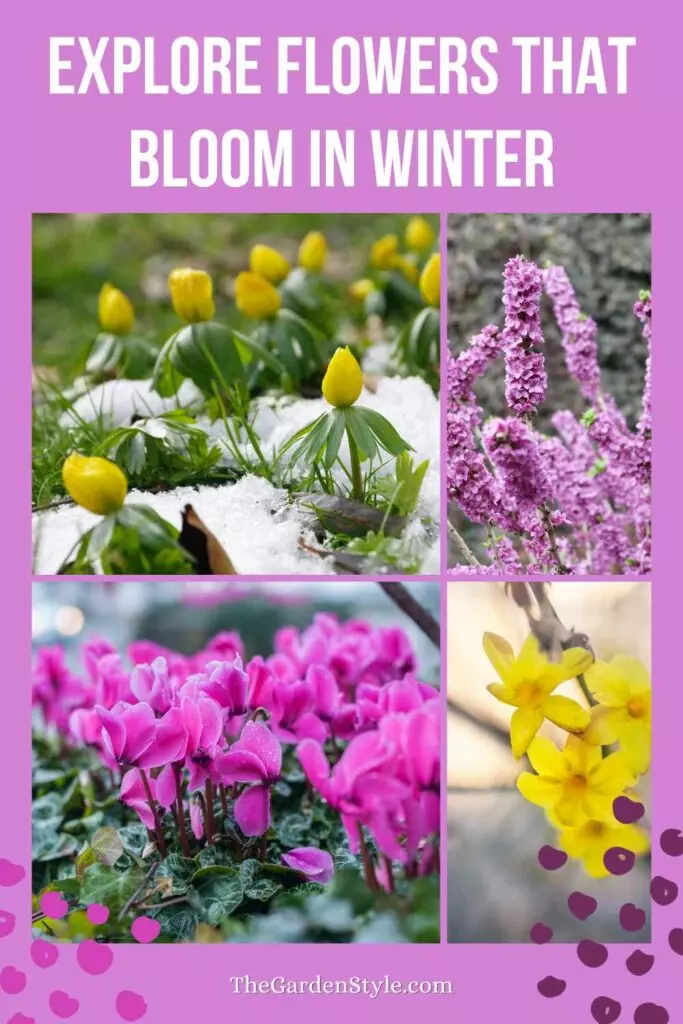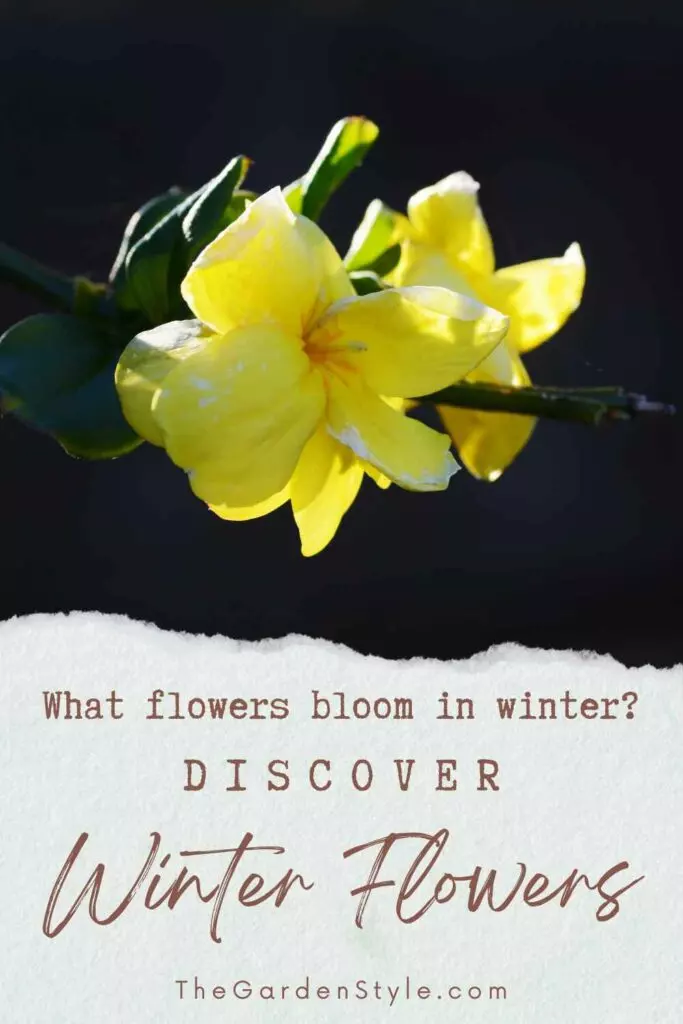Embrace the magic of winter as we embark on a journey through the frost-kissed landscapes adorned with the exquisite beauty of 46 winter flowers from around the world. In the hush of the cold, these blossoms emerge as nature’s resilient ambassadors, transforming the chill into a canvas of vibrant colors and intricate designs. Join us on this floral odyssey, where petals unfurl amidst the snowflakes, and gardens become a living testament to the astonishing diversity of winter blooms. From the delicate Christmas Rose gracing European meadows to the vibrant Winter Jasmine that lights up Asian gardens, each flower we encounter tells a unique story of survival and splendor in the face of winter’s embrace. Let’s explore together the enchanting world of these cold-loving wonders, discovering the artistry and resilience that these 46 winter flowers bring to the hibernating landscapes across continents. Winter may bring a chill, but in the language of flowers, it speaks in hues of warmth and timeless elegance.
Table of Contents
46 Winter Flowers
Discussing with seasoned horticulturalists, I’ve uncovered that the characteristics of winter flowers go beyond mere frost resistance. These plants that bloom in winter have evolved to capitalize on whatever sunlight pierces through the dreary clouds. Their blooms are often more intense in color and fragrance, designed to attract the sparse pollinators during these months. From the sweet-smelling Daphnes to the striking Camellias, each winter bloom brings its own special brand of beauty to the garden.
Here is a list of the winter flowers with names and geographical where these plants are native. Here’s a general breakdown:
- Pansy (Viola): Native to Europe and Western Asia.
- Winter Jasmine (Jasminum nudiflorum): Native to China.
- Christmas Rose (Helleborus niger): Native to Europe, including the Alps and the Carpathians.
- Winter Aconite (Eranthis hyemalis): Native to Europe, including the Alps and the Carpathians.
- Camellia (Camellia japonica, Camellia sasanqua): Native to Asia, primarily China and Japan.
- Cyclamen (Cyclamen persicum, Cyclamen coum): Various species are native to Europe, the Mediterranean region, and the Middle East. Learn more about how to care for Cyclamen.
- Witch Hazel (Hamamelis): Native to North America and East Asia.
- Winter Honeysuckle (Lonicera fragrantissima): Native to China.
- Snowdrop (Galanthus): Native to Europe and parts of the Middle East.
- Lenten Rose (Helleborus orientalis): Native to Europe.
- English Primrose (Primula vulgaris): Native to Western and Southern Europe.
- Iceland Poppy (Papaver nudicaule): Native to the subpolar regions of Europe, Asia, and North America.
- Hellebore (Helleborus): Various species are native to Europe and Asia.
- Christmas Cactus (Schlumbergera): Native to the coastal mountains of Brazil. Learn more about how to care for Christmas cactus.
- Winter Heather (Erica carnea): Native to the mountains of central and southern Europe.
- Viola (Viola odorata, Viola wittrockiana): Various species are found worldwide.
- Winterberry (Ilex verticillata): Native to eastern North America.
- Daphne (Daphne odora): Native to East Asia.
- Sweet Alyssum (Lobularia maritima): Native to the Mediterranean region.
- Japanese Andromeda (Pieris japonica): Native to Eastern Asia and North America.
- Skimmia (Skimmia japonica): Native to Southeast Asia.
- Mahonia (Mahonia spp.): Native to North and Central America, as well as East Asia.
- Winter Daphne (Daphne odora): Native to China and Japan.
- Winter-flowering Cherry (Prunus x subhirtella): A hybrid cherry tree, not native in the wild.
- Winter-flowering Viburnum (Viburnum x bodnantense): A hybrid viburnum, not native in the wild. Learn more about the Viburnum plant.
- Winter Iris (Iris unguicularis): Native to the Mediterranean region.
- Heather (Calluna vulgaris): Native to Europe and Asia.
- Alpine Forget-Me-Not (Myosotis alpestris): Native to Europe.
- Winter Pinks (Dianthus): Various species are native to Europe and Asia.
- Lungwort (Pulmonaria): Native to Europe and western Asia.
- Winter Windflower (Anemone blanda): Native to southeastern Europe and Turkey.
- Crocus (Crocus vernus): Native to Europe and Asia. Learn more about how to grow Crocus.
- Siberian Squill (Scilla siberica): Native to Russia and parts of Eastern Europe.
- Winter Starflower (Chionodoxa luciliae): Native to Turkey and the Caucasus.
- Japanese Quince (Chaenomeles japonica): Native to Japan, China, and Korea.
- Leopard’s Bane (Doronicum): Native to Europe and Asia.
- Glory of the Snow (Chionodoxa): Native to the eastern Mediterranean region.
- Winter Purslane (Claytonia perfoliata): Native to North America.
- Alpine Wallflower (Erysimum alpinum): Native to the Alps.
- Winter Cress (Barbarea vulgaris): Native to Europe and Asia.
- Alpine Bellflower (Campanula alpina): Native to the Alps.
- Wintercreeper (Euonymus fortunei): Native to East Asia.
- Winter Cyclamen (Cyclamen coum): Native to Europe and the Middle East.
- Winter-blooming Bergenia (Bergenia cordifolia): Native to central Asia.
- Wintergreen (Gaultheria procumbens): Native to North America.
- Winter Jasmine (Jasminum mesnyi): Native to China.
Keep in mind that some plants, particularly hybrids and cultivated varieties, may not have a specific native habitat. Additionally, many of these plants are commonly cultivated in gardens around the world, even if they are not native to a particular region.
Winter Flowers with Pictures
Here are some pictures of flowers that bloom in winter:
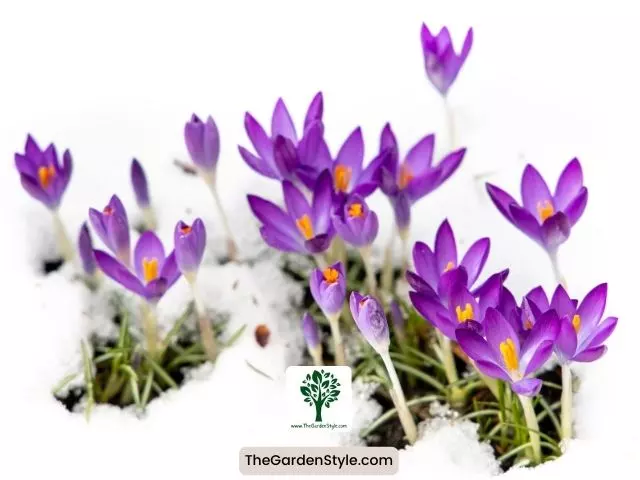
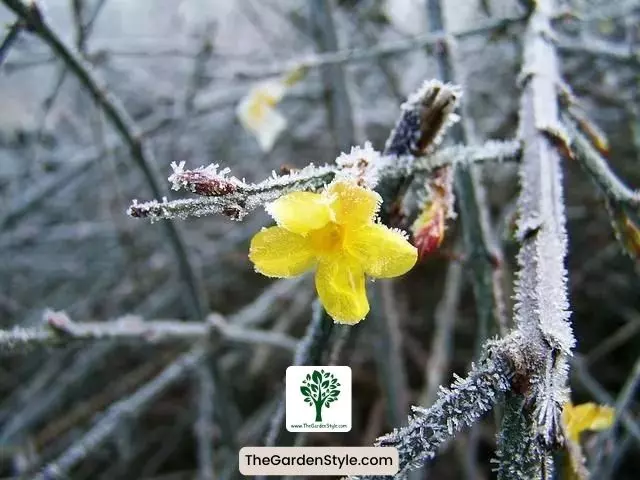
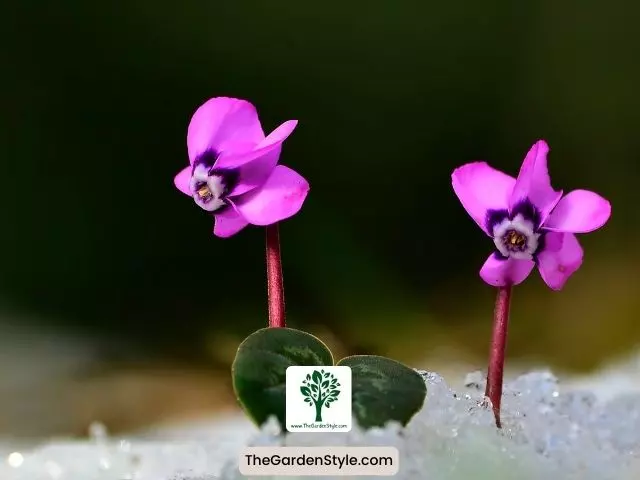
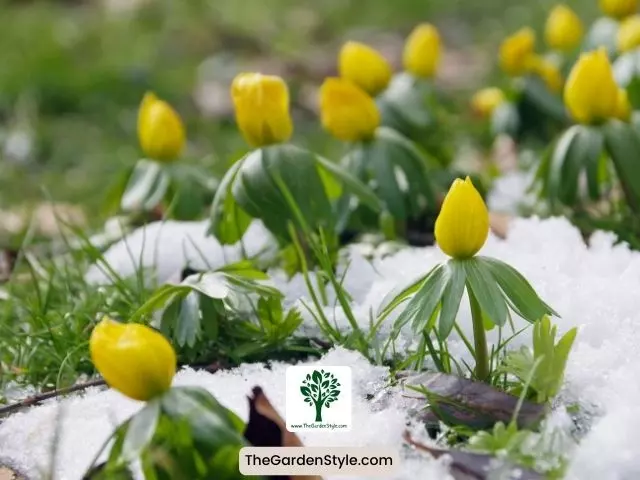
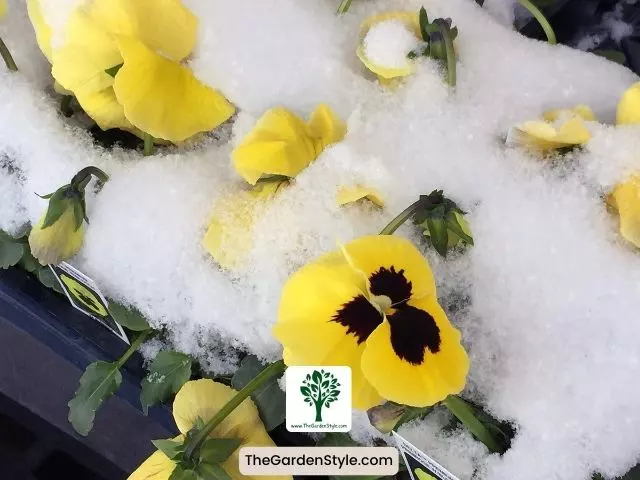
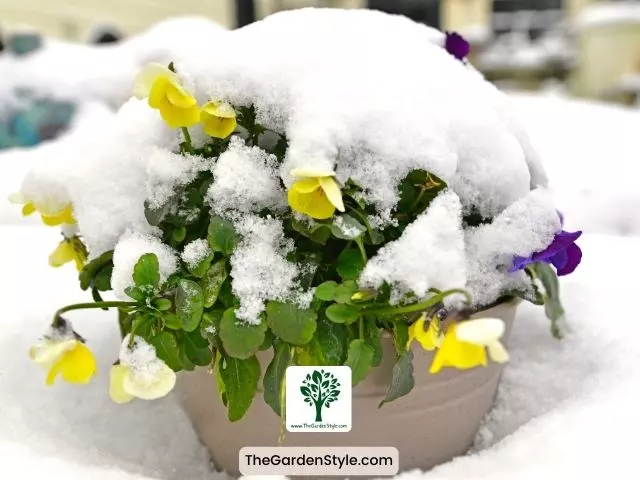
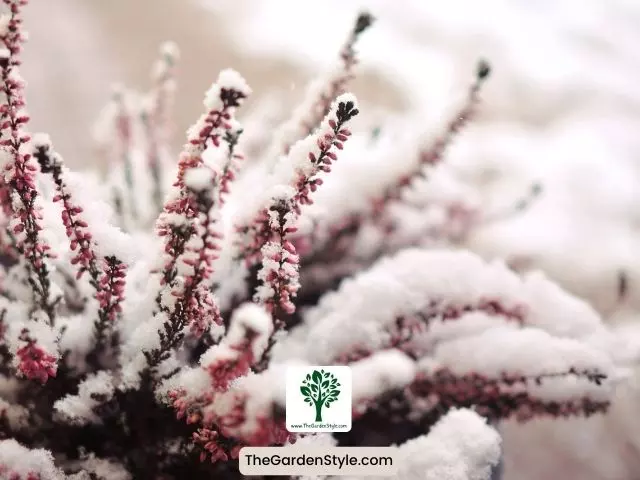
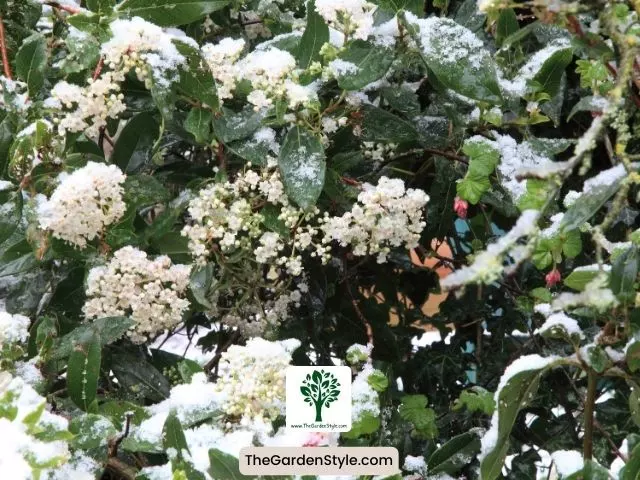
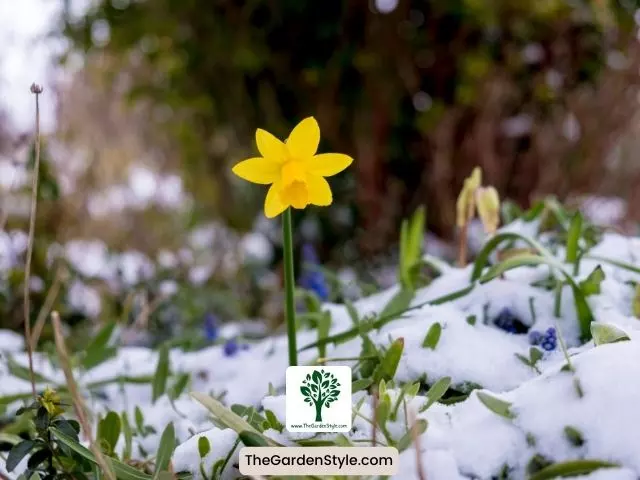
Winter Flower Arrangements
In the USA, various winter flowers are popular for arrangements, especially during the holiday season. Some of the most popular winter flowers used in arrangements include:
- Poinsettia (Euphorbia pulcherrima): Known for its vibrant red bracts, the poinsettia is a classic Christmas plant and is widely used in holiday arrangements. Learn more about growing Poinsettias outside.
- Christmas Cactus (Schlumbergera): This succulent plant produces beautiful, cascading blooms in shades of pink, red, or white, making it a favorite for winter arrangements.
- Amaryllis (Hippeastrum): Large, trumpet-shaped flowers in various colors, including red and white, make amaryllis a popular choice for winter bouquets and centerpieces. Learn more about how to grow Amaryllis.
- Holly (Ilex): With its distinctive red berries and glossy green leaves, holly is a traditional symbol of the holiday season and is often incorporated into winter arrangements.
- Winter Jasmine (Jasminum nudiflorum): This flowering shrub produces bright yellow blooms and is commonly used in winter floral arrangements for a touch of color.
- Cyclamen (Cyclamen persicum): Cyclamen’s unique, swept-back petals and vibrant colors, such as pink, red, and white, make it a charming addition to winter bouquets.
- Paperwhites (Narcissus papyraceus): These fragrant, white blooms are a type of daffodil and are often forced to bloom indoors during the winter months, making them a popular choice for arrangements. Learn more about planting Daffodil bulbs.
- Christmas Rose (Helleborus niger): This evergreen perennial produces elegant, white or pink flowers and is a favorite for winter garden arrangements.
- Winterberry (Ilex verticillata): Known for its bright red berries, winterberry branches add a festive touch to winter floral displays.
- Red and White Roses: Classic roses in red and white are popular choices for winter arrangements, symbolizing love and purity. They can be combined with other seasonal flowers for a festive look.
- Evergreen Branches: Foliage from evergreen plants like pine, spruce, and cedar is often used in winter arrangements to add a touch of greenery and a pleasant fragrance.
- Juniper Berries (Juniperus): The blue-gray berries of juniper add texture and color to winter arrangements, complementing other seasonal flowers.
- Cedar Cones: The cones from cedar trees are often included in winter bouquets and arrangements for a rustic and natural feel.
- Eucalyptus: Silver dollar eucalyptus or other varieties with silvery leaves are popular for adding texture and a subtle fragrance to winter floral displays.
- Cranberry Branches: The deep red color of cranberries adds a festive and seasonal touch to winter arrangements.
These flowers and foliage are commonly used in wreaths, centerpieces, bouquets, and other floral arrangements to bring warmth and holiday spirit to homes and events during the winter season.
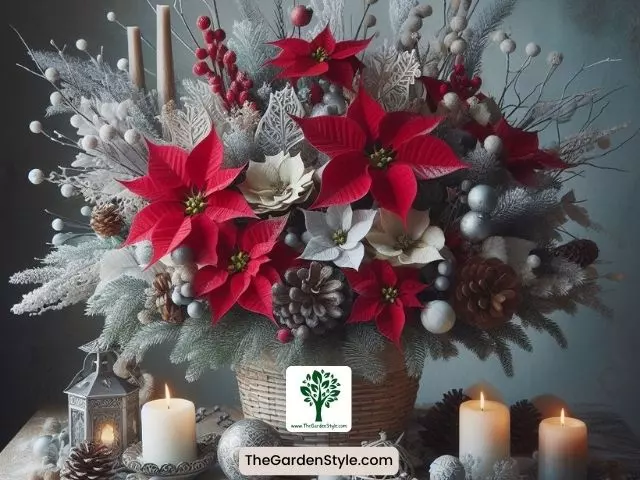
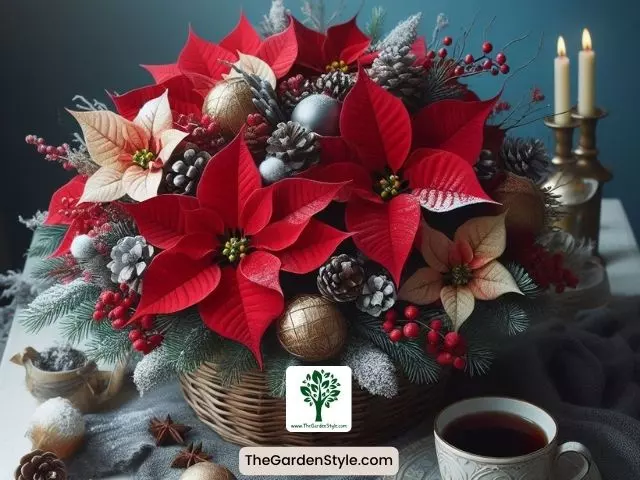
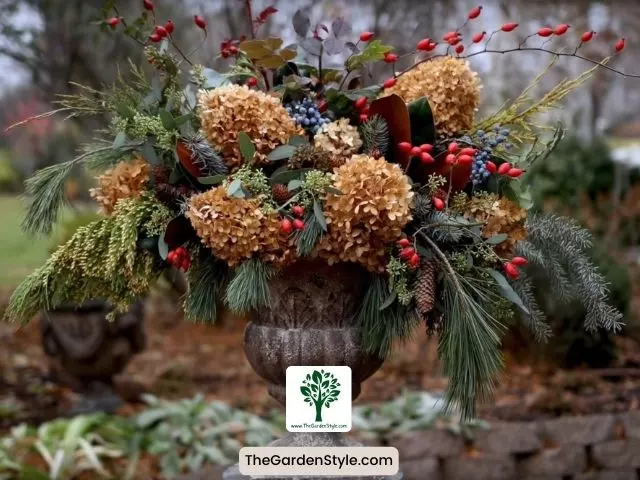
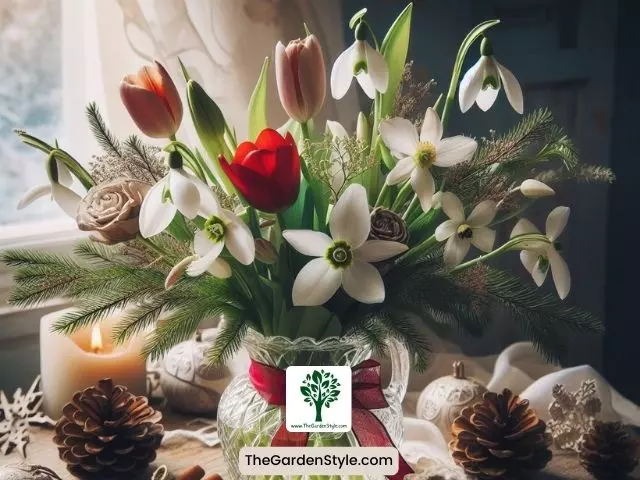
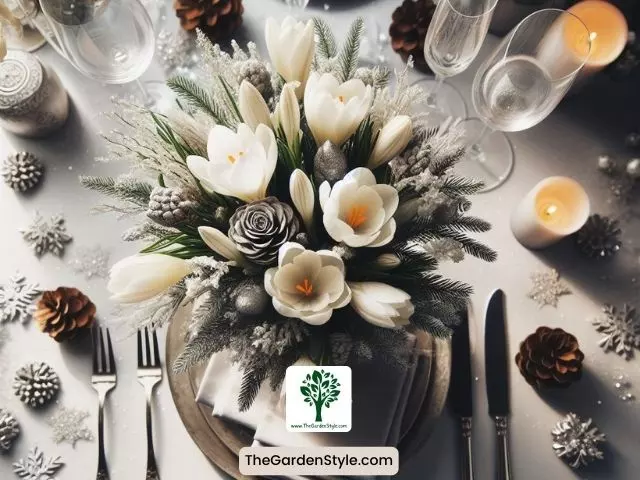
If this post about winter flowers was helpful, please share it:
